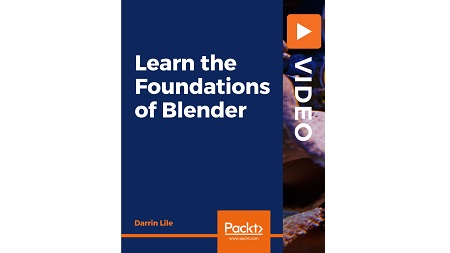
English | MP4 | AVC 1280×720 | AAC 48KHz 2ch | 6h 25m | 1.48 GB
Learn to use Blender and start 3D-modeling, texturing, lighting, and rendering your own amazing 3D scenes
In this course, you’ll learn the fundamental concepts and skills that will allow you to create three-dimensional models in Blender. We begin with Blender’s interface and navigation tools and move steadily into its foundational modelling tools such as Extrude and Loop Cut. We’ll talk about building up complex objects from basic shapes, and you’ll be introduced to some of Blender’s modifiers, such as Mirror and Subdivision Surface.
We then talk about using Blender’s Cycles render engine to create materials for our objects, light our scenes, and create stunning renders. We first look at Blender’s camera and render settings. We will then go over the different kinds of light that Blender has to offer. And we use the Node Editor to create and modify materials for our scene. The interaction of materials and lighting is an important part of any scene, and this course provides the fundamental concepts and techniques you’ll need to achieve great renders in Blender.
Finally, we will talk about what UV mapping is and why it is needed. We’ll go over the tools that Blender offers for UV-mapping our 3D objects. And we’ll look at how to export your UV maps out of Blender so you can build textures in image-editing programs such as GIMP. We’ll then bring these textures into Blender and assign them to our objects using the Node Editor. In addition, we will work with Blender’s Texture Painting tools, and examine how we can paint textures directly on our 3D models.
Click the Enroll button and get on the road to success with Blender!
Learn
- Create 3D objects and scenes
- Create realistic materials
- UV map 3D objects and assign textures
- Light and render a scene using the Cycle render engine
Table of Contents
D Modeling
1 Interface and Navigation
2 Edit Mode and the Extrude Tool
3 Duplicating Objects
4 The Loop Cut and Slide Tool
5 Rendering a Scene
6 The Array Modifier
7 Assembling Complex Objects
8 Circular Extrusions
9 The Subdivision Surface Modifier
10 Continuing the Lego Scene
11 Snapping Tools
12 Beginning the Lego Character
13 The Mirror Modifier
14 Creating the Character’s Arms
15 Creating the Hands
16 Finishing the Lego Scene
Materials and Lighting
17 Render Settings
18 Blender Lights
19 Lighting a Scene
20 The Importance of Scene Scale
21 Creating Materials
22 Assigning Multiple Materials to an Object
23 Using a Noise Texture for Displacement
24 Using the Color Ramp
25 Using HDR Image
26 Cleaning Up Your Renders
UV Mapping and Texturing
27 What is UV Mapping
28 Seams and Scale
29 UV Coordinate Space
30 Average Island Scale and Pack Islands
31 Assembling and Exporting a UV Map
32 Using GIMP to Create a Color Map
33 Applying the Texture Map in Blender
34 The Align UVs Tool
35 Creating a Color Map
36 HDR Images for Reflections
37 Getting Ready for Texture Painting
38 Using a Texture with the Brush
39 Using the Stencil Brush Mapping
40 Painting on the 3D Object
41 Adding Bump Displacement
Resolve the captcha to access the links!